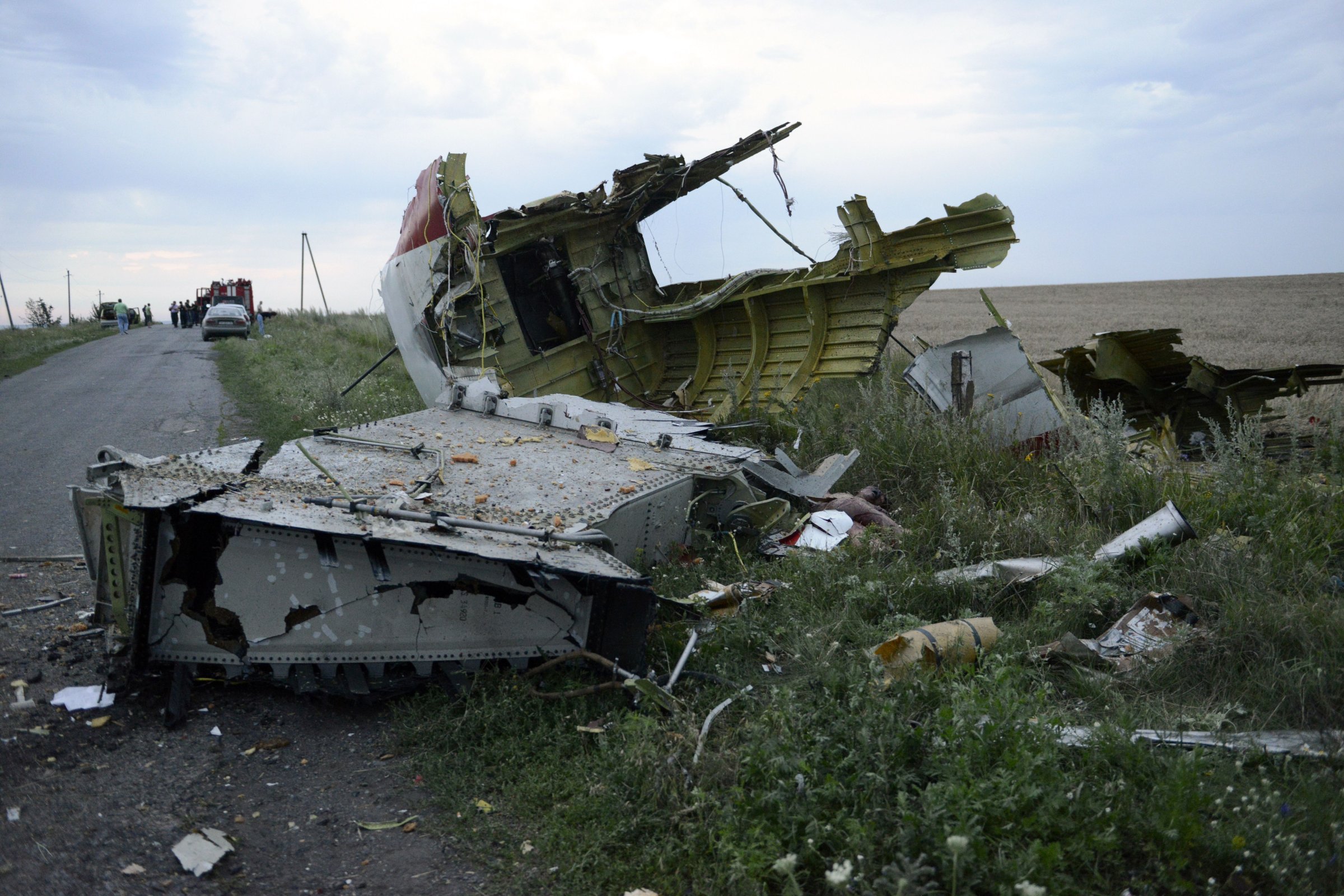
Malaysia Airlines Flight 17 was hardly alone in the skies over eastern Ukraine when it was apparently shot down on a route from Amsterdam to Kuala Lumpur, Malaysia. Airline routes are like highways—there’s a lot of traffic on them. And there were other flights from other airlines in the Ukraine corridor, including an Aeroflot jet that was making its way from Sheremetyevo to Moscow on a route that sliced a south-north path across eastern Ukraine. Within hours, though, the air control radar over Ukraine looked empty.
No aircraft belonging to any American carriers seem to have been in the area. Earlier this year, the Federal Aviation Administration had issued a security advisory warning U.S. airlines against flying over Crimea, the scene of a Russian takeover in that country’s dispute with Ukraine. But the Malaysian flight was north of that zone. Still, some airlines are already voluntarily deciding it’s a good idea to stay away from the spot Flight 17 went down. “Out of an abundance of caution, Delta is not routing flights through Ukrainian airspace,” Delta said in a statement Thursday, for example.
But why were so many others in a hot area in the first place? Because it’s a conflicted, crowded and mobile world. With increasing numbers of ever longer long-distance flights, commercial airlines are constantly crossing contested borders and territories. It’s not just Ukraine that has border issues. It’s Georgia and South Ossetia, and Moldova and Transdniester. And that’s just in one region.
U.S. carriers can’t avoid the friction, either. The airlines, as a rule, don’t comment on the specifics of their security programs. But they rely on the State Department and the FAA for security information to make their choices. For instance, Baghdad was once on the flight path of some India-bound flights, a route that would be adjusted based on conditions on the ground. Today, Tel Aviv is another airport that is obviously near a conflict zone, and no U.S. airline has stopped serving that market, so rerouting is fairly common.
“Our dispatch and security people are constantly looking at the troubled areas we fly through,” one pilot told TIME.
The downing of an aircraft at 32,000 ft. is a dimension not considered since Korean Air Lines Flight 007 was shot out of the sky by a missile fired by a Russian fighter jet in 1983. After that tragedy, U.S. carriers purportedly tested missile avoidance technology, but it’s not clear that any of them have gone beyond that. Malaysia Flight 17 may put the issue back on the radar.
More Must-Reads From TIME
- The 100 Most Influential People of 2024
- The Revolution of Yulia Navalnaya
- 6 Compliments That Land Every Time
- What's the Deal With the Bitcoin Halving?
- If You're Dating Right Now , You're Brave: Column
- The AI That Could Heal a Divided Internet
- Fallout Is a Brilliant Model for the Future of Video Game Adaptations
- Want Weekly Recs on What to Watch, Read, and More? Sign Up for Worth Your Time
Contact us at letters@time.com